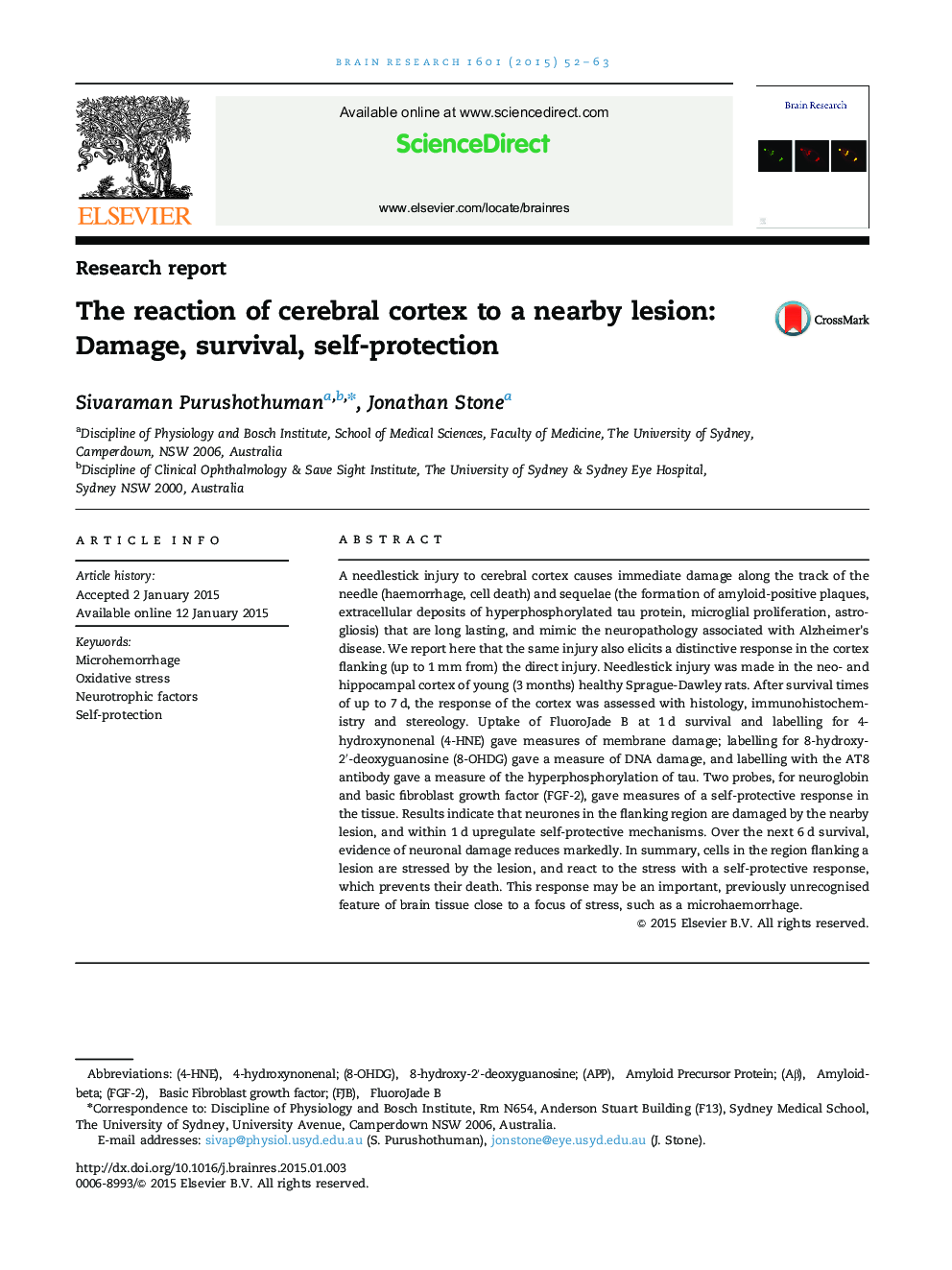| Article ID | Journal | Published Year | Pages | File Type |
|---|---|---|---|---|
| 6263159 | Brain Research | 2015 | 12 Pages |
â¢This paper presents a novel finding, which - if confirmed - is a fundamental part of the biology of the cerebral cortex.â¢A focal lesion of the brain, totally destructive at the focus, induces a self-protective response in surrounding cortex.â¢Each senile plaque in the adult/ageing brain, for example, may be surrounded by a self-protecting 'halo'.â¢This may explain the slowness of the progress of age-related degenerations.â¢This self-protecting response may contribute to acute functional deficits caused by a lesion while maintaining its structure.
A needlestick injury to cerebral cortex causes immediate damage along the track of the needle (haemorrhage, cell death) and sequelae (the formation of amyloid-positive plaques, extracellular deposits of hyperphosphorylated tau protein, microglial proliferation, astrogliosis) that are long lasting, and mimic the neuropathology associated with Alzheimer׳s disease. We report here that the same injury also elicits a distinctive response in the cortex flanking (up to 1 mm from) the direct injury. Needlestick injury was made in the neo- and hippocampal cortex of young (3 months) healthy Sprague-Dawley rats. After survival times of up to 7 d, the response of the cortex was assessed with histology, immunohistochemistry and stereology. Uptake of FluoroJade B at 1 d survival and labelling for 4-hydroxynonenal (4-HNE) gave measures of membrane damage; labelling for 8-hydroxy-2â²-deoxyguanosine (8-OHDG) gave a measure of DNA damage, and labelling with the AT8 antibody gave a measure of the hyperphosphorylation of tau. Two probes, for neuroglobin and basic fibroblast growth factor (FGF-2), gave measures of a self-protective response in the tissue. Results indicate that neurones in the flanking region are damaged by the nearby lesion, and within 1 d upregulate self-protective mechanisms. Over the next 6 d survival, evidence of neuronal damage reduces markedly. In summary, cells in the region flanking a lesion are stressed by the lesion, and react to the stress with a self-protective response, which prevents their death. This response may be an important, previously unrecognised feature of brain tissue close to a focus of stress, such as a microhaemorrhage.
